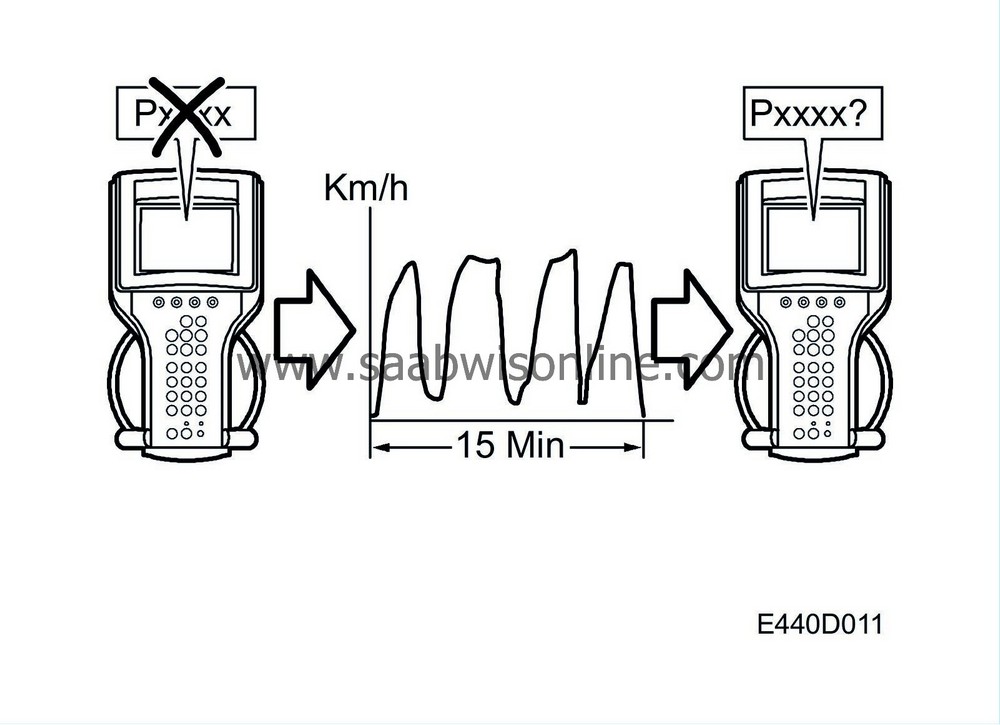OBDII diagnostics
| OBDII diagnostics |
| Trip |
Starting the engine and then driving the car in such a way as all the components and functions covered by OBDII diagnostics have been monitored.
| Driving cycle |
Starting the engine.
| Example of a trip |
The car must be driven for at least 15 minutes (without engaging P, R or N) at varying loads and speeds. The speed should be above 25 km/h for most of the “trip” (15 min.).
Limp-home DTCs generated :
The CHECK ENGINE and CHECK GEARBOX warning lamps go on directly once the component has been diagnosed.DTCs generated that do not activate Limp-home:
The CHECK ENGINE and CHECK GEARBOX warning lamps go on during the second driving cycle once the component has been diagnosed (although the DTC will be generated during the first driving cycle once the component has been diagnosed).To turn off the CHECK ENGINE warning lamp without taking further measures, 4 driving cycles must be completed in succession during which the component is diagnosed. The fault must not be detected during any of these driving cycles.
The components have different diagnosis times for the TCM control module. This means that certain DTCs can be generated before the entire “trip” has been completed.
Example
A fault is detected in a solenoid (S1) after about 0.5 seconds, while a fault in the transmission fluid temperature sensor is first detected after 15 min.



